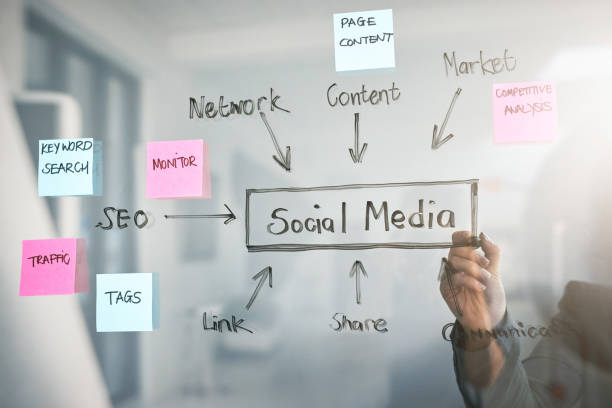Organization, creativity, and tenacity are three essential traits for anyone who wishes to plan a successful trade show. The majority of business-to-business (B2B) organizations measure the success of trade shows by the number of leads, opportunities, and return on investment (ROI) that result from an event. However, the level of effort that is put into an event is ultimately what determines the success rate of that event. Companies typically spend a significant amount of money to participate in trade exhibitions. Consequently, you need the metrics to illustrate why it is a viable strategy within your marketing portfolio.
The following are six suggestions that will help assure the success of your upcoming trade show:
1. Make your plans well in advance.
One of the most important things you can do before a trade show is to plan well ahead of the scheduled time. Beginning at any time is always a good idea. Your team should know the trip dates so they can book flights well in advance of any price increases. Ensure that you have room allocations before the hotel runs out of available rooms.
The pre-show campaign strategy is quite important, in addition to the event logistics. Are you going to release a brand-new product close to the event itself? Have you received any significant news that you would like to share with us during the week of the show? Are you in need of having product sheets printed and placing an order for giveaways? Do you need to rent ipads? You should begin planning your emails for the event at a minimum of four to six weeks before the trade show. You will want to let your audience know that you will be attending the trade show, which is why you should get creative. How about sending out customized postcards to announce any significant news, notifications, or opportunities to meet the team? While most companies opt for digital marketing methods, using unique and original strategies that include printed material can help you get the word out before the trade show.
2. Understand your space
Finding out as much as you can about your location before attending a trade show is your best bet for having a successful time there. Figure out where you will be on the floor, how you will be positioned in relation to the other competitors, and even the direction you will be looking when you are there.
Your experience at the trade show can be positively or negatively impacted by the position of your exhibit, thus it is crucial that you have a sound plan for selecting the appropriate site. Is there a lot of foot traffic in your locality or is it very quiet? Is it lighted by natural light, or is there harsh artificial lighting near the back of the hall?
To ensure that your trade show exhibit is a success, you need to pay attention to even the smallest of details and factor them into the overall plan that you employ. A location near the back of the exhibition hall is not necessarily a bad thing. In fact, with the right approach, it may help you attract committed guests who are looking around for a deal.
Before you reserve floor space, you should make an effort to find out which other exhibitors you will be situated near. You can easily “steal” the leads of one of your competitors by strategically placing a pop up banner or other display with a unique offer next to their stands to lure in customers interested in their product or service. For example, if your company offers a deal that is better than the one offered by one of your competitors, you can easily “steal” their leads.
In addition to the tactical aspects of your booth space, it is essential to be aware of your location in relation to the utilities and services that are available. Determine the location of the nearest power outlet and consider whether or not you will require extension cords. So, determine the location of the restroom closest to you and commit it to memory so that you do not end up wandering aimlessly among the other stands.
Think about the aspects that could contribute to successful sales. For example, is there a restaurant or café adjacent to your booth that you could utilise to seal the deal with potential customers while avoiding the noise of the exhibition hall? The discovery of opportunities, which can result in an increase in leads, sales, and interest in your company, can be aided by the pursuit of seemingly small details such as these.
Create a checklist of essential goods that you will need for your booth, and ensure that you have all of them prepared before you go to the event. When you are in a hurry to get to the event, it is easy to forget about basic necessities like trash cans, electrical cables, writing implements like pens and pencils, and even phone chargers.
3. Get the teams responsible for sales and executive operations ready.
Communication is one of the most useful tools in the preparation for a trade show. In most cases, many teams, including marketing, sales, and the leadership team, attend trade exhibitions. In the days leading up to the event, check to see that everyone is on the same page and has access to all of the pertinent material.
Include the scheduled meetings and booth hours on everyone’s calendar. Make a document outlining the logistics to make sure nothing is forgotten and that everyone is on the same page regarding their expectations. In the event that you need to get in touch with any member of your team while you are at the location, the paper should list their respective phone numbers. When planning to go on a trip, it is a good idea to print a few copies and have them readily available on a mobile device.
You should send out an invitation to join in a “prep call” one week before the trade show’s scheduled date to everyone attending the trade show. Prepare a PowerPoint presentation and include a synopsis of the scheduled booth meetings and networking activities. Housekeeping elements such as the hotel, venue, booth hours, dress code, etc. should also be included in the slide deck.
4. Participate regularly in social media.
Before, during, and after the event, you should upload images to your social media networks that you took during the event. Visitors should be encouraged to stop by your booth to participate in a contest, collect a freebie, or watch a demonstration. Make sure to include your stand number and the event hashtag in your marketing materials so that people can locate you quickly.
5. Make sure there are giveaways.
Keep in mind that more traffic equals more great freebies. Make a financial investment in a prize or activity that will draw guests to the event. Be imaginative in the services that you provide. You should encourage attendees to stop by your exhibit and socialise there. This will help break the ice and open the door to conversations and, maybe, opportunities that are suitable for you.
6. Discussion and further action
After the trade show, you should plan to have a debriefing call with your team. Make some notes on the things that went well and in the areas in which there is room for improvement. Were you pleased with the location of your booth and the number of people who stopped by? Did the attendees find meaning in what you had to say? When you start planning for the subsequent trade show, these notes will be helpful in identifying what aspects of the strategy need to be altered.
The follow-up after the show is really important. Within the first 48 hours after the conclusion of the event, you should make certain that all leads are entered into your customer relationship management (CRM) system and shared with your sales staff. The information in this report gives you a better understanding of the booth traffic, the quantity of qualified leads, and the possible opportunities for your company. This action can be used to build historical data connected to trade exhibitions, which can provide a rationale for participation in upcoming events, and it can also be used to develop credibility.
Published by HOLR Magazine.




